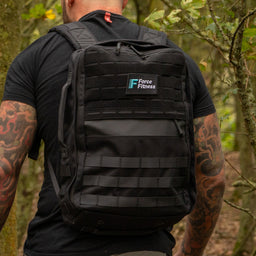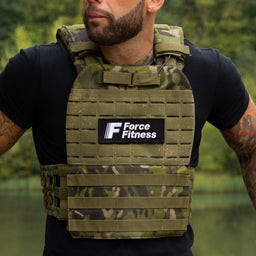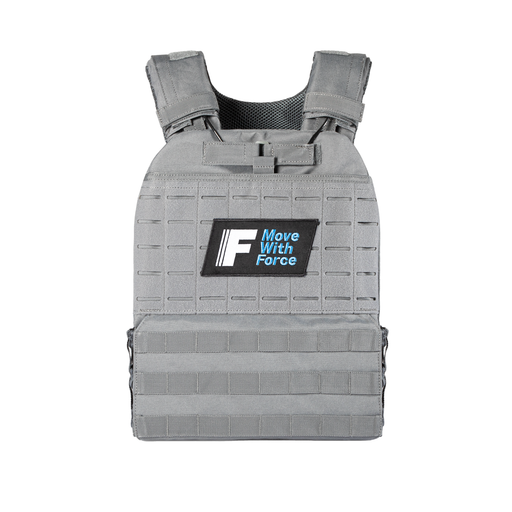
10 Brutal Military Fitness Drills You Can Do at Home
You don’t need to sign up for selection or have access to a boot camp to train like a soldier. Some of the toughest drills in the world don’t require fancy equipment or even much space. What they demand is effort, resilience, and the kind of mental toughness that sets elite operators apart.
Military fitness is built on simplicity, consistency, and high output. These drills are used in training pipelines around the world to test not just strength and endurance, but willpower. If you want to train like the world’s best, start here.
Below are 10 military-style fitness drills you can do from home. They’ll test your limits and build real tactical capacity. No excuses.
Burpee Broad Jumps
This drill is a staple in many military training programs because it blends explosive power, cardiovascular endurance, and grit. You drop into a burpee, then launch forward with a broad jump. Repeat over a set distance or time.
Why it works: Full body conditioning, explosive lower body strength, relentless cardio.
How to do it: Set a 20 metre space or use a hallway. Perform 10 burpee broad jumps, walk back, repeat for 5 rounds.
Crawl Circuits
Whether it’s a bear crawl, leopard crawl, or crab walk, crawling is fundamental in military movement drills. It builds shoulder stability, core control, and total-body toughness.
Why it works: Crawling trains coordination under fatigue and strengthens the chain from shoulders to hips.
How to do it: Set up a 10 metre space. Crawl forward bear-style, switch to crab on the way back. Repeat for 5 minutes without rest.
Deck of Pain
All you need is a deck of cards. Assign an exercise to each suit (for example: hearts = push ups, clubs = squats, diamonds = sit ups, spades = burpees). Face cards are 10, aces are 11. Flip a card and perform the reps.
Why it works: This mimics the unpredictability of real-world stress. You don’t know what’s coming next, and it just keeps coming.
How to do it: Get through the full deck as fast as possible. Track your time, try to beat it next time.
Ruck Get Ups
A nod to tactical fitness and the demands of gear. If you’ve got a rucksack or weighted vest, use it. If not, fill a backpack with books or water bottles. Start lying flat on your back, stand up to full extension, go back down. That’s one.
Why it works: Builds leg drive, grip strength, trunk endurance, and simulates real-world movement under load.
How to do it: 10 get ups every minute on the minute for 10 minutes. Progress to 15 then 20.
Push Up Ladder
Push ups are the bread and butter of military fitness. This version builds volume and endurance.
Why it works: Builds muscular endurance in the chest, shoulders, and triceps while reinforcing mental resilience.
How to do it: Start with 1 push up. Rest 10 seconds. Then 2. Rest 10 seconds. Keep climbing the ladder until failure. Rest 1 minute. Come back down.
Tabata Squats
This protocol was originally developed to train Olympic athletes. It’s been adopted by tactical units for a reason. 20 seconds work, 10 seconds rest, 8 rounds. Bodyweight squats at full intensity.
Why it works: Trains anaerobic power, leg stamina, and mental grit in a short burst.
How to do it: Set a timer for 4 minutes. Go flat out every round. Try to maintain pace across all 8.
Tactical Lunge Matrix
This isn’t just about building strong legs. Lunges build unilateral control and real-world movement patterns. You’ll combine forward, reverse, and lateral lunges into one flow.
Why it works: Improves mobility, stability, and endurance across all planes of motion.
How to do it: 5 forward lunges each leg, 5 reverse, 5 lateral, no rest between directions. Complete 3 to 5 full circuits.
Jump Squat to Crawl Combo
Start with 5 jump squats, drop straight into a 5 metre bear crawl. Stand up, repeat. This combo builds explosive power and brute endurance in one brutal sequence.
Why it works: This is how the military trains for power and transition under fatigue. It’s all about staying effective when tired.
How to do it: 10 rounds, rest 1 minute between rounds. Increase rounds as your capacity grows.
Wall Sit and Shoulder Raise Hold
Wall sits are bad enough. Now add shoulder stress. Grab light weights (or water bottles, bricks, or ammo cans if you’re old school) and hold your arms straight out in front.
Why it works: Builds isometric leg strength and scapular endurance under load. Teaches your body to stay composed under discomfort.
How to do it: Hold a wall sit for 30 seconds with shoulder raise. Rest 30 seconds. Repeat for 5 rounds.
Max Effort Circuit
Finish with a circuit designed to mimic the energy systems used in short combat bursts. No pacing. Go full send.
Why it works: Forces you to hit redline, recover, and repeat. Builds the engine of a real-world operator.
How to do it:
-
10 burpees
-
20 push ups
-
30 squats
-
20 mountain climbers
-
10 jump lunges (each leg)
Time how long it takes. Rest 2 minutes. Repeat 3 rounds.
Final thoughts
Military fitness isn’t about six packs or Instagram poses. It’s about showing up, grinding through, and building the kind of capacity that matters when it counts. These drills might be simple, but they’re not easy. That’s the point.
Train hard, stay sharp, and earn your edge. Force Fitness was built for this. You were too.












